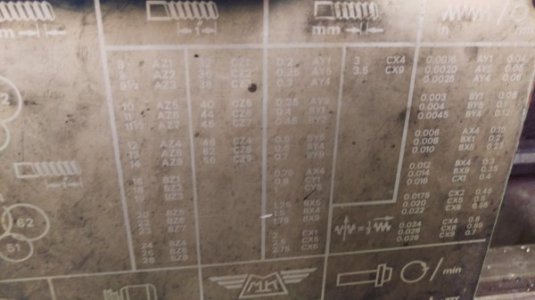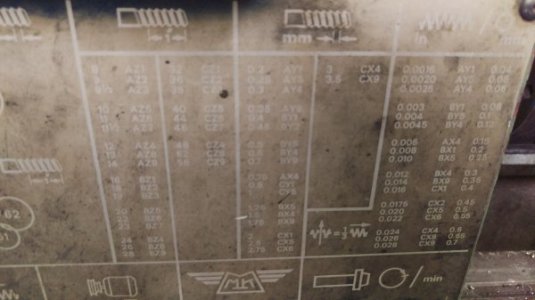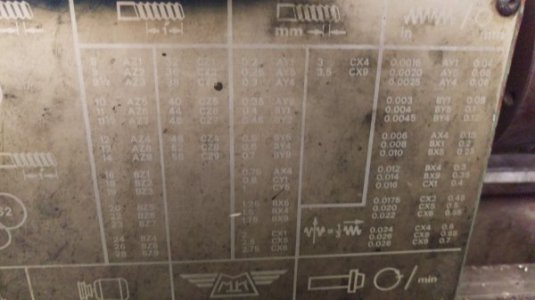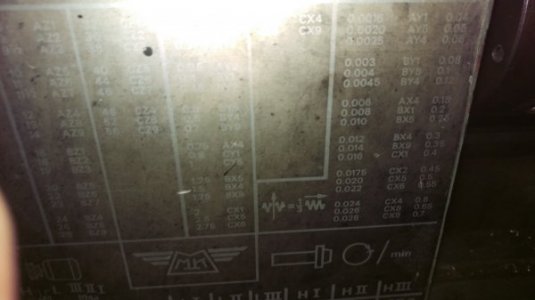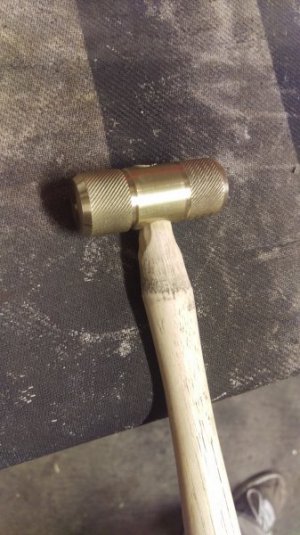Pierre,
My thread dial has a 16T gear and 8 tpi lead gear. It does 4 to 60 tpi inch threads and 7 to ,4 mm metric.
Sometimes the dial is spinning quickly (coarse threads) and its hectic to catch the mark (8 marks on dial). Its a budget lathe.
I can see how a 32T gear on the dial would slow it by half and make life easier.
My thread dial has a 16T gear and 8 tpi lead gear. It does 4 to 60 tpi inch threads and 7 to ,4 mm metric.
Sometimes the dial is spinning quickly (coarse threads) and its hectic to catch the mark (8 marks on dial). Its a budget lathe.
I can see how a 32T gear on the dial would slow it by half and make life easier.
Last edited:


